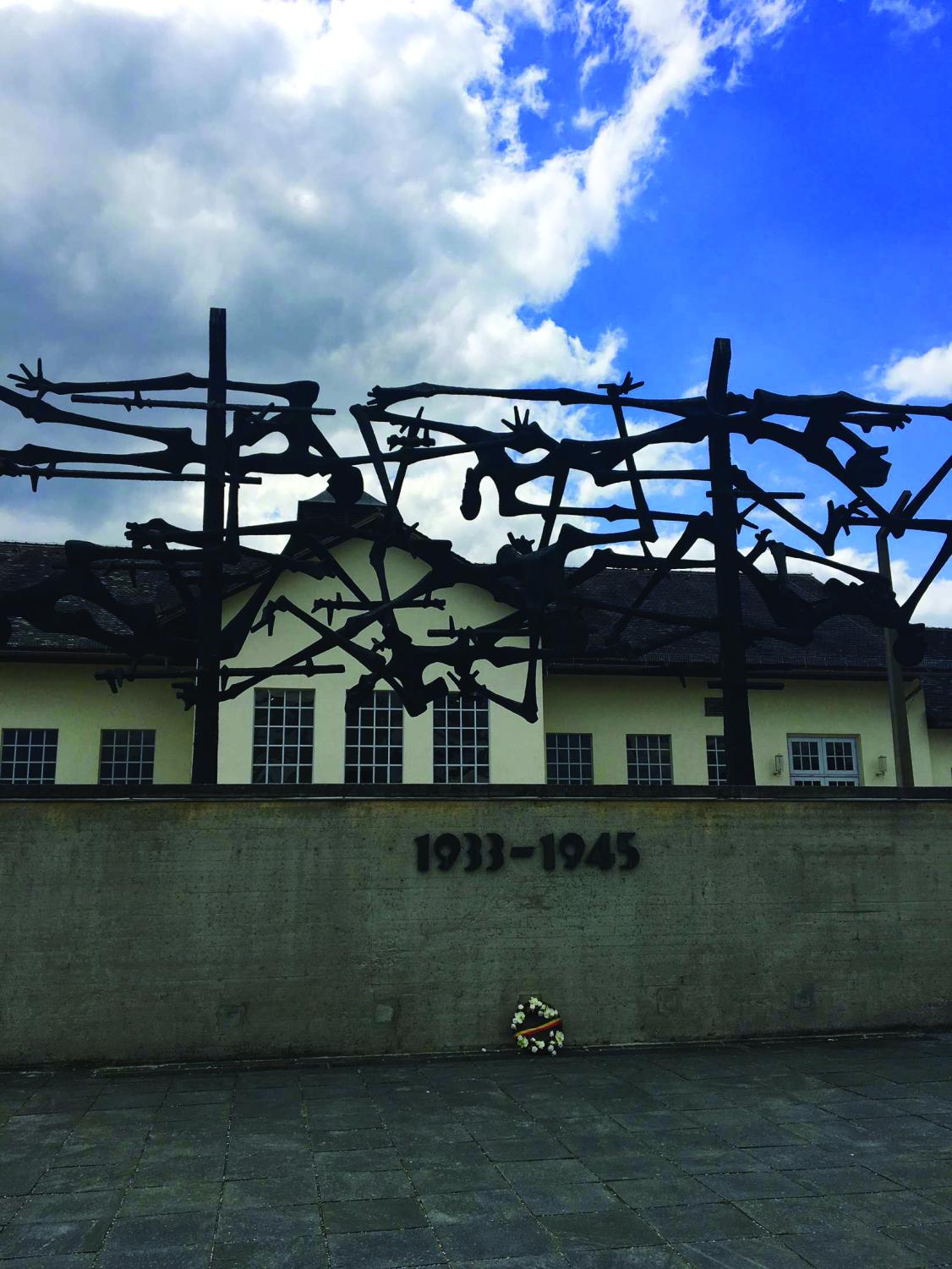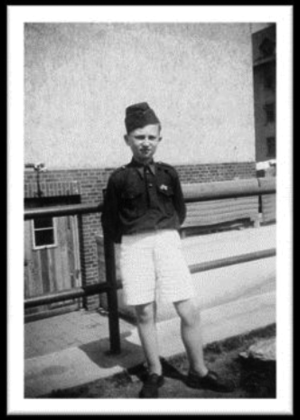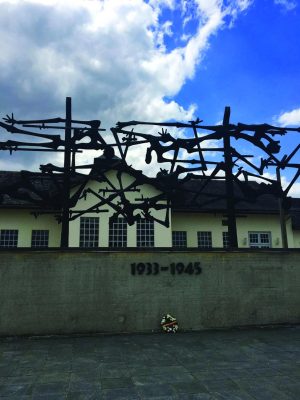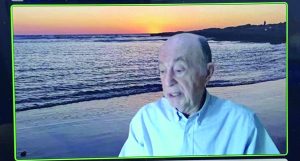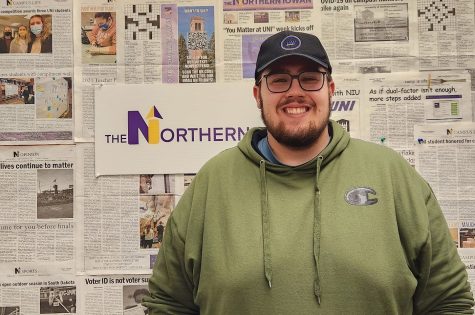Never forgetting, never repeating
Jan 30, 2023
UNI hosts webinar with survivor for International Holocaust Remembrance Day
This past Thursday, Jan. 27, was a day of somber remembrance as it marked International Holocaust Remembrance Day. Seventy-eight years ago, on Jan. 27, 1945, Auschwitz-Birkenau, the largest and most notorious Nazi concentration death camp where over 1.1 million people, the majority of them being Jews, were systematically killed by the Nazi regime, was finally liberated.
International Holocaust Remembrance Day was originally established back in 2005 as a resolution to the general assembly of the United Nations and has officially been observed every year since 2006. However, there have been other events that have occurred every year to commemorate the Holocaust remembrance in countries around the world.
The oldest official Remembrance Day and primary Holocaust Remembrance Day is called Yom HaShoah (Day of Holocaust), which is observed within many Jewish communities around the world. In 1951, the Parliament of the State of Israel, also known as the Knesset, chose the 27th of Nisan on the Jewish calendar as it loosely corresponded to the same time of the Warsaw ghetto uprising in 1943. The 27th of Nisan corresponds to a date in April or May each year, this year falling on April 18.
There are many traditions that are associated with observing Yom HaShoah in Israel, such as a two-minute siren that goes off twice that day, along with lighting special memorial candles, reading names of the deceased, wearing white and hearing testimonies from survivors.
Within the United States there have also been a variety of celebrations, but in 1980, the United States Congress unanimously passed a piece of legislation that created the “Days of Holocaust Remembrance,’’ which was an eight day period that coincided with the already existing Yom HaShoah.
Last Thursday, the Center for Holocaust and Genocide Education at the University of Northern Iowa partnered with the Jewish Federation of the Quad Cities to put on a webinar with Holocaust Survivor and Educator Sol Nayman so he could share his story.
Sol was born in Stoczek Węgrówski, Poland, on Nov. 5, 1935. In September 1939, the Nazis invaded Poland and attacked the town. His hometown had a Jewish population of a little over 1,000 people. As they knew the Nazis were approaching, the family fled to the nearby forest and hid. Sol remembers his father quickly grabbing a thick blanket and wrapping him in it and carrying him. From the forest, they slowly saw the flames grow and spread in their town as the Nazis set fire to it. His grandmother tried to go back into town to help someone, and that was the last time his family ever saw her.
They then fled and made it to Baialystok, which at that time was under Soviet control as Hitler and Stalin signed a treaty that split the country of Poland in half. From there, Sol and his family were loaded onto old, smelly and cramped cattle cars as they were deported without being told where they were going without any food and water. Eventually their train reached what we now know as the Komi region of the USSR, where he and his family lived in a hard labor camp where 5,000 other Jewish families were living at the time, and they were used as free labor for the Soviets.
In 1944, they were shipped to a labor camp in Ukraine. Sol spoke of how extremely brutal conditions were and all that somebody could do was “survive today and hope to see you tomorrow.”
When the war ended in 1945, they were given a choice to become citizens of the Soviet Union and still possibly face discrimination as they were Jewish, or they were told to leave. His family chose the latter, and they ended up in a displaced persons camp in Wetzlar, which was located in the American zone of western Germany. Finally, for the first time in almost five years, Sol and his family were able to celebrate their religion, as for the last several years they had not been allowed to celebrate any Jewish holidays or perform any ceremonies. Sol also remembers going to school and being excited to have a school uniform as it was new clean clothes for him to finally wear.
After much trial and tribulations of trying to figure out where to go and what country would accept his family, on Oct. 16, 1948, Sol and his family arrived in Canada on the SS Sturgis where he still resides today. After telling the audience his story, he then reflected on several key moments that saved him and his family’s life such as deciding to flee his hometown to the woods back in September of 1939. If they had not fled, he talked about how he and his family most likely would’ve been shot in their home or deported to the nearest concentration camp, Treblinka. Because of his father’s quick thinking to go to the woods, they were able to make it onto the Soviet side, and Sol said, “Every day I thank God for not turning me into ashes at Treblinka”.
For years after the war and well into his adulthood, Sol struggled with being a Holocaust survivor as he had not had to endure a Nazi concentration camp or under Nazi occupation. That changed on a visit he made to the United States Holocaust Memorial Museum where he read their definition of what a holocaust survivor was: “All those who are displaced, persecuted or discriminated against due to the racial, religious and ethnic and political policies of the Nazis and their allies between 1933 and 1945.” After reading that, Sol finally was able to accept in his heart that he was a Holocaust survivor.
In the many years since he started doing Holocaust education around Canada and the rest of the world, Sol accomplished many things such as getting a Jewish memorial in the cemetery of his hometown in the 1990s. Sol also warned the audience of the danger of banning books as banning a book can lead to burning a book, and burning a book can lead to burning people.
Sol has also been an active member for the International March of the Living. Every year people march the path leading from Auschwitz to Birkenau as a tribute to the victims of the Holocaust. Hundreds of survivors have walked the path as a symbol of defiance to how they are still living despite the Nazis’ best effort to systematically kill and wipe out the Jewish people. Sol is also the last surviving Jewish person from Stoczek Węgrówski, Poland to have lived there before the Nazi invasion.
In a Q&A towards the end of the webinar, I was given a chance to ask Sol the following question: As a member of the last generation to grow up learning about the Holocaust with survivors being alive to tell us the stories, how can we carry the torch to teach the next generation that will not grow up with survivors to tell their story? Sol replied with “I will use a quote from Eli Wiesel: ‘When you listen to a witness you become a witness.’ There are many great books and resources that tell survivor stories,” Sol also talked about how we need to remember, support and to look forward.
Here at the University of Northern Iowa, we do remember, support and look forward to the future when it comes to Holocaust remembrance. From 2007 to 2019, the Center for Holocaust and Genocide Education (CHGE) at UNI organized a Holocaust remembrance ceremony that has either taken place on campus or at a venue in the Cedar Falls-Waterloo area, where a proclamation was received for the Day of Holocaust Remembrance from the state of Iowa, city of Cedar Falls, city of Waterloo and the University of Northern Iowa. Due to the pandemic, no ceremony was held from 2020 – 2022, but hopefully a ceremony will resume, most likely in a virtual form this spring.
Stephen Gaies, the director of the CHGE, talked about the collaboration that they have had with the Jewish Federation of the Quad Cities. “Since its establishment, the CHGE has emphasized collaboration and partnerships with numerous organizations and institutions throughout the state: other universities and colleges, public school districts, museums, libraries, religious and cultural organizations. These efforts have allowed us to program speakers, to organize art and educational exhibits, concerts, film screenings and to conduct teacher workshops at different venues throughout the state,” he said. The CHGE does not only focus on Holocaust education, as they also hope to shed light on other genocides that have happened throughout the world and other human rights issues that are going on in the present day.
Later this year will mark the 78th anniversary of the end of World War II, and the generation that served in the generation that experienced the second world war are slowly aging and unfortunately passing away. Events like these teach us the importance of collecting the stories from remaining survivors with the purpose to “Never Forget” so something like the Holocaust happens “Never Again.”






